|
Did you ever wonder what that plumbing product was that was being used in extreme conditions? Do you know what the leading plumbing equipment is used in extreme temperature and pressure conditions? The only thing that has made it easier for everyone is the rotary joints. The rotary joint is a device that has multiple functionalities and an easy-to-use interface, making it ideal for following extreme mediums through it, such as reliable, liquid, or gas. No matter what you put in it, including warm water and chemicals, this rotary joint allows everything to pass through. The fast flow of the medium is enabled by moving the connection between a still input source and a rotating outlet. I would like to begin by focusing on the title of the content, which is a rotary joint for steam. These rotary union manufacturers are perfect for plants where steam needs to pass through plumbing connections, and it is constructed to be corrosion and rust-free. These rotary unions are made from a variety of materials including steel and aluminum, making them more durable. The construction and operation of this beautiful device are usually straightforward and advantageous. It is properly connected to a stationary input device so that the medium can continue to flow through it. On the other side of the rotary union is a rotating outlet which is constructed in such a way that it can also supply steam under extreme pressure as well as provide the given medium. It allows the rotation of the integrated parts, and a seal is also used here to prevent liquid leakage. What is the central function of the steam rotary joint?
An executive can easily understand and use the rotary joint for steam. The steam is followed through the stationary input medium of the rotary joint and stored in the device until the valve opening does not match during its rotation period. With extreme pressure and constant movement, steam is expelled from the invention. Rotating around its axis continuously, the rotary union keeps steam flowing through it until the inlet allows it. Steam rotary joints are composed of what? In terms of composition, rotary joints for steam are no different from those with basic features. Depending on the product's size and shape, secondary components may vary, but the basic construction remains the same. In developing rotary joints for steam, engineers pay close attention to the construction material. Whenever metals are exposed to moisture for a prolonged period, they are easily rusted or corroded. Because it will be used exclusively for steam, it had to be constructed with a material that is not prone to corrosion or rusting. It is generally created from steel or brass to provide high-quality rotary joints for steam. Nevertheless, these products have the following components as their main structure: Housing: As the name implies, it is the main component of any rotary joint, which is responsible for supporting the different elements. To make the device function properly, it is designed with an inlet port and an outlet port, which makes it easier to flow stems through it. In rotary unions, bearings facilitate the proper movement of steam through the shaft. Depending on the size and type of the rotary union, the number and bearings are used in the rotary union. The seal prevents steam from leaking out of the rotary union, as its name suggests. Through it, steam cannot leak out of the rotary union because it ensures the proper binding of the entire unit. Seal sizes and numbers depend on the main rotary union where they will be used, just like bearings. Steam is carried through the entire rotary joint by the shaft, which is considered the soul of the joint. What are the different types of rotary unions? There are various types of ports available for you to choose from, ranging from the one with one port to the one with four, depending on your basic requirements. Various types of rotary unions are being designed to handle different kinds of materials consistently. In other words, you should not choose a rotary union randomly to fulfill your different needs. Before going further with the selection process, you need to determine your preferences first. Rotating unions are classified into three types based on their functions: Straight port rotary joints: In this case, rotary joints are being constructed to transfer steam directly through them. The process is quite straightforward and quick. For steam, it is one of the most commonly used rotary joints. Elbow port rotary joints: The next in the series is an elbow port rotary joint, which allows your medium to follow through at an angle, as seen in the bends. A bending curve here reduces the speed of the medium following through it to a great extent. Multiple port rotary joints: Rotary unions with multiple ports have a similar shape and size to perforated cylinders. Furthermore, there are three types of rotary joints with numerous ports:
0 Comments
Pivoting parts are normal moving applications — robot arms, winders, spools, shafts, and rotary tables are only a couple of models. And keeping in mind that making rotary movement is simple when air or fluids should be moved from a fixed stock to a pivoting part for cooling, warming, greasing up, or communicating liquid power, the errand turns out to be more convoluted. This is where rotary unions come in. Rotary unions give a point of interaction that permits liquid media — air, steam, or fluid — to be moved between a turning part and a static part. They're intended to oblige a wide assortment of media conditions, including extremely high and low temperatures, streams, and tensions, including vacuum applications. Furthermore, dissimilar to other liquid exchange systems, rotary unions work for applications including any mix of turn points, remembering ceaseless revolution for one heading. There are various plans and setups for rotary unions they're in many cases specially crafted for the application — yet all rotary unions are comprised of four essential parts: the lodging, at least one heading, the shaft, and at least one seal. The lodging is ordinarily the fixed part and is associated with the media supply. The shaft is free of lodging and pivots with the associated rotary gear. Media can move through the union radially or pivotally employing ports in the lodging. The turning part is upheld by an outspread course — regularly at least one completely fixed profound notch metal ball. The main part of the rotary union is the fixing system, which forestalls or diminishes spillage between the pivoting and fixed parts, and should do as such with insignificant grinding and wear. Seal types range from basic lip seals to additional complicated spring-stacked mechanical seals that consequently change per limit the strain on the seal faces, lessening grating and wear. Airmax Pneumatic Ltd is the leading rotary union manufacturers in India. We offer various types of industrial valves like ball valves, butterfly valves, globe valves, plug valves, and many more. The liquid exchange ought to in a perfect world be sans release, however in certain applications, totally release-free exchange is unimaginable. For these cases, the media is kept from being delivered into the climate by an assortment framework that recuperates the released media, safeguarding encompassing gear and staff.
Whether picking a norm, off-the-rack rotary union, or planning a custom item, the accompanying variables ought to be thought of:
The sort of media is particularly significant, since the lodging, shaft, and seal materials should be viable with the liquid coursing through the union. Liquid media can go from water to exceptionally destructive fluids and steam, and manufacturers address the difficulties of each by offering many materials, for the lodging and shaft, yet additionally for the seals. Albeit single-and double stream plans are most normal, rotary unions can incorporate numerous autonomous stream ways that permit various media to be moved simultaneously without blending. It's likewise normal for slip rings or fiber optic rotary joints to be coordinated with rotary unions, permitting the section of the two liquids and electrical or fiber optic links. A rotary union is a contraption that gives a seal between a decent stock section and a turning part, in this manner allowing the trading of fluid. It goes by an immense number of names, genuinely dependent upon industry and application. These include Swivel joint, rotary coupling, fluid turn, rotary complex, etc. Regardless, the fundamental justification for a rotary union goes on as in the past: Deliver media from a proper commitment to a turning part. A rotary union is intended to believe in the media to be moved, rotational speed, strain and temperature, and the number of stream ways. The principal parts are:
Where Are Rotary Unions Used? Rotary unions are used across a couple of business areas including current motorization, food and reward, elective energy, oil and gas, and flight and security. They are used so generally ignoring their impact on staff and structure usefulness is straightforward. We are the leading rotary union manufacturers in India. Computerized Numerical Control (CNC) Machine Cooling
The coolant ought to be passed on to parts made of metal and various materials going through machining. This fluid thwarts overheating, stays aware of layered adequacy, and gets together machined garbage. Bottle Filling and Capping Hack syrup, chemical, and soda pop rewards are bundled and thusly covered through motorized structures. Rotary unions are utilized to deal with the significant fluid from a central stock into these compartments as they move along a vehicle. Hydro Dam Turbine Control Hydroelectric dams adapt power as water streams across turbine front lines. Pressure-driven lines are used to control the opening and closing of doorways and the coming of streams of water. Floating Production Storage and Offloading (FPSO) Toroidal turns are utilized in getting systems toward the ocean vessels which accumulate oil and gas from subsea supplies. These marvelous systems work under crazy stream rates while going through huge mechanical nerves. Softened Natural Gas (LNG) Loading Arms Stacking arms are used to move fluid cargo to and from offshore vessels, large hauler trucks, and rail course vehicles. They ought to outfit strong transport of cargo with discharge-free fixing. Radar Cooling Systems Electronic systems on convenient units are in steady use, make heat, and in like manner require cooling structures. Cooling electronic structures in these applications incorporate specific plans. Working limits contrast subject to the specific application. Strain can go from 0 to 20,000 psi and temperature from - 150 to 400˚F. Rotational speeds all around fall in the extent of 0 to 1000 rpm. Fluids could consolidate water, oil, coolant, or a few other flowable media that wanted to be moved. Stream sections could number from one (1) to ten (10) or more. Different factors ought to be seen in the arrangement of a rotary union, of which the fixing parts may be the most huge. Material Selection in Rotary Seals While OK for by far most static applications, traditional strain seals like O-Rings are not routinely adequate for rotary fixing. Disintegration which causes wear and force advancement can limit the presence of flexible seals in direct contact with the shaft, and seal smash and stretch whereupon pressure seals depend can furthermore intensify this issue. The photos underneath show examples of O-Ring scratched region and tension set. These are a direct result of outrageous wear and conceivably heat improvement, exclusively, and both can provoke inopportune seal dissatisfaction. Scouring is described as the resistance of relative development between two surfaces. The lower the coefficient of crushing, the more direct it is for surfaces to slide north of one another. We want disintegration while walking around our viewpoint or driving in our vehicle to stay aware of dauntlessness and control. Nevertheless, focusing on seals causes mileage and as such decreases life. Polytetrafluoroethylene (PTFE) is a thermoplastic material with an extremely low coefficient of disintegration. Likewise, it performs remarkably in rotary fixing applications. Spring-Energized Seals and Design Considerations A spring-empowered seal (SES) includes a coat, regularly machined from PTFE. A spring is implanted to enable the seal's lips, in this way keeping them in contact with the seal organ and shaft. This gives a for the most part low scouring fixing game plan. Despite better interesting life versus ordinary tension seals, these low scouring seals achieve less stick-slip issues and less motor power use. That interfaces with less mileage on stuff and systems. It should be seen that PTFE can be changed with fillers, for instance, carbon, graphite, molybdenum disulfide, and polyimide to underline explicit properties moreover. Series 100-Cantilever Spring-Energized Seal
Pneumatic cylinders are mechanical parts that give straight power to different gadgets and frameworks. They produce the power by applying packed air aside from a fixed barrel and depleting it from the opposite side. This activity causes the cylinder/pole gathering contained inside to broaden or withdraw. It is vital to accurately introduce pneumatic cylinders. In any case, there is a gamble of erroneous or untrustworthy activity and untimely disappointment. This is particularly valid for hydro-pneumatic cylinders, which create high powers in a little bundle. Thusly, the inaccurate establishment can prompt extreme hardware harm and additionally administrator injury. Underneath, we examine how to appropriately introduce a pneumatic cylinder. Furthermore, we feature the significance of testing the framework before placing it into activity and the precautionary measures to take while performing establishments. HOW DO I INSTALL A PNEUMATIC CYLINDER PROPERLY?
There are two fundamental fixing focuses to consider while introducing a pneumatic cylinder: the body and the cylinder bar end. How these focuses are fixed relies upon the application. In static applications, the cylinder can be mounted to the machine seat and fixed unbendingly to its construction. Both pneumatic and hydro-pneumatic cylinders are commonly mounted with a rectangular front rib mount (likewise in some cases called an MF1 mount or FH mount) or tapped openings toward the front of the face (additionally in some cases called an MR1 mount or UH mount) because of the great powers created. In any case, a few pneumatic cylinders utilize a semi-unbending trunnion mounting technique (MT1) that uses body supports or turns and clevis pins. It permits them to turn as they follow the expansion and withdrawal of the cylinder bar. In uncommon cases, a side carries mounting technique (MS2T mount) might be utilized. In complex linkage applications, the cylinder should have the option to turn on its mountings. There are a few answers for this mounting prerequisite. For instance, a front clevis, focal trunnion, or back pivot can be utilized on the body of the cylinder to permit the cylinder and burden framework to accomplish various levels of equilibrium. On the other hand, a clevis, front pivot, or general eye can be utilized toward the finish of the cylinder bar to mount turn connections. If a trunnion mounting technique is picked, it is fundamental to guarantee the cylinder can sway openly on the mountings and the line associations can flex when being used. A portion of what to remember while introducing a pneumatic cylinder include:
For what reason SHOULD I TEST THE SYSTEM? Before placing a cylinder into activity, it is essential to test the whole framework to guarantee the part incites with negligible obstruction and the bar encounters insignificant side stacking. Testing tasks can be directed by utilizing an adaptable carrier and blow firearm to check the cylinder is introduced appropriately and ready to move openly at the distributed least working tensions. For hydro-pneumatic cylinders, it is essential to test them in low tensions (approach and withdraw) without going into high tensions (escalation) to guarantee the tooling and by and large arrangements are adjusted accurately. These testing tasks should adhere to the maker's rules for sequencing the cylinder for approach, withdraw, and increase. WHAT PRECAUTIONS SHOULD I TAKE WHEN INSTALLING PNEUMATIC CYLINDERS?
A square pneumatic cylinder is a mind-boggling piece of gear with a genuinely lengthy life expectancy. Sadly, various issues can emerge because of inappropriate support, unfortunate establishment, and awkward fix. Most issues can be forestalled essentially by "perusing the manual". In any case, regardless of whether support is adequate, now and again blames happen that require fixing. We might want to share a couple of ways of forestalling pneumatic cylinder issues and staying away from exorbitant fixes. 1) Side Loading Quite possibly the most well-known reason for pneumatic cylinder breakdown is side stacking, which is when tension is applied horizontally to the cylinder pivot. This prompts lopsided cylinder and bars wear or breakage, seal disappointments, tube scoring, and numerous other mechanical issues. The way to forestalling side stacking is to guarantee the right establishment. It's critical to check the arrangement of the cylinder bar with its mating machine part. All cylinder mountings ought to be checked consistently. 2) Contamination Pollution happens either inside from the air supply or remotely from the climate. Kinds of defilement incorporate water, oil, and solids. Toxins can harm seals, plug holes, and degenerate surface completions. Forestalling tainting:• Solids - You can forestall solids tainting by keeping the producer's port plugs in working condition until fitting the framework with funneling. You ought to likewise eliminate all pollutants before interfacing with cylinder ports. A metallic wiper can eliminate enormous impurities from the pole. • Water - To keep harm from water, introduce spotless practiced steel bars and clasp or potentially apply unique coatings to the outer layer of the pneumatic cylinder. • Oil - To keep away from oil harm, pick seals viable with the oils utilized in the framework. Check with your parts provider to affirm similarity. 3) Poor Lubrication Pneumatic cylinder disappointment frequently occurs because of deficient cylinder seal oil. With unfortunate grease, seals ultimately dry out, prompting spillage and overheating. Seals ought to be re-greased up and supplanted routinely. You could likewise attempt "no-oil" cylinders or utilize an infusion lube framework. 4) Leakage At the point when appropriately introduced and kept up with, pneumatic cylinders shouldn't experience the ill effects of holes. Notwithstanding, following erroneous establishment, seal disappointment, or mechanical harm a hole might happen. High temperatures and mugginess can likewise influence the wear of a unique seal valve, in this way prompting spillage. It's feasible to forestall a brake issue through ordinary upkeep and ideal substitution of the barrel, bar, and cylinder seals. Take a look at the natural resiliences of a part before involving it in your application. 5) Operation Beyond Performance Range Working pneumatic cylinders past their presentation limits will undoubtedly prompt harm and untimely disappointment. To forestall such issues keeping the maker's functional guidelines is significant. If your gear is giving indications of strain or you realize it's been exhausted, it's vital to look at the bars and convey a visual wellbeing check. For future activities, the bar string size might be expanded. Fast delivery couplings track down their utilization in numerous modern sections. To take out liquid spillage, these parts have been broadly utilized in mechanical applications and enterprises where consumption of opposition materials is unavoidable. Its application has been found in gas supplies just as a way to control the spillage of gas from the chambers and jugs. Uses of the Couplings Fast delivery couplings are principally utilized in businesses where the medium is disseminated through a line. The medium could be water, gas, oil, steam, vacuum, or any such thing that necessities to control the stream. Such frameworks request successive detachments and interfacing back. Without the utilization of a legitimate connector, the framework can bring about a lot of liquid misfortune during associations and detachments. For use in every framework, these Quick Release Coupling are planned with specific particulars to coordinate with the requests and the parts utilized. They should impeccably fit without causing any snugness or perfection around, and ought not to cause any liquid misfortune, and should allow smooth progression of the medium going through The Vantages
You can track down single and twofold shut-off types for fast delivery couplings. Their utilization can diminish vacation, increment yield, and don't need the utilization of valves as in regular pressure-driven frameworks. They request fewer establishment tasks, and thus, decrease work time and establishment costs. Support that is associated with the conventional frameworks is additionally diminished. As fluid spillage is diminished or dispensed with, the cycle saves you a huge load of cash that would somehow cause loss of fluid. This likewise brings about a cleaner and more secure climate to work with. Your work climate will be more secure, as spillage can make laborers coincidentally outing and fall. They are likewise found in businesses where compacted air, hot liquids, and cooling frameworks are utilized. Utilization of couplings can take out copies that could cause while detaching and interfacing liquids frameworks streaming at high temperatures. What to Buy A speedy delivery coupling can be made of treated steel, basic steel, plastic, or metal. They are by and large accessible as back and forth hardware and the accessibility of sizes and shapes relies on the kind of industry where it is utilized. Before purchasing, likewise, think about the measure of liquid that will be appropriated through the line and the power by which it will be conveyed. What's more, the temperature of the liquid, the kind of liquid, and the rate at which it will be dispersed likewise matter. A directional control valve is a fundamental piece of strain driven and pneumatic design. It moves from an open to an absolute shut position rapidly, setting off quickly speeding up and decelerating liquid. In a water-fueled and pneumatic framework, the oil stream can be figured out how to go with directional control valve types: • Spool Type • Cartridge Type • Pilot-Operated Check Valves • Diverter type Clear Directional control valves will, all things considered, be of the diverter type and are customarily used to control the progression of water-driven and pneumatic chambers, oil entering one port and being sent on an either-or reason through two unmistakable ports or close by a tank port to the two culminations of a twofold acting chamber to develop or pull out it. The more current spool types have three positions and, ward upon the types of the spool, it will be unprejudiced in the focal position and along these lines, the two assist ports with willing either be packed or open to tank in the two interesting positions. These are generally used to stream control valve chambers with, regardless, have the piece of slack over diverters of being simpler to work under strain and can be utilized to work various chambers or potentially engines correspondingly as different actuators from the similar square of spools. Some manual spool valves will occasionally have a fourth position which is portrayed as above water and is sensibly the two help ports related so the joined water-driven and pneumatic chamber will move in and out as the store on its directions.
A pilot-worked check valve will permit oil to move uninhibitedly one way, yet it will move essentially the other way when pilot pressure is applied to take the different seats to let the hindered liquid go through. The cartridge type directional control valves work accordingly to different sorts, in any case, the valve instrument is contained inside a cartridge so it can, for instance, sired along with different kinds of cartridge valves inside a relative square. What Is Pneumatic Magnet? A pneumatic magnet, additionally called an air incited magnet, is a kind of pneumatically controlled extremely durable magnet, which is typically in reduced size and with low lingering attraction. How Do Pneumatic Magnets Work? The actuation and deactivation of the magnetic field of the magnet are accomplished through a twofold acting magnetic pneumatic cylinder. Its air actuator winds down the magnet on and, permitting all the security of a long-lasting magnet that won't drop the heap during a force or air misfortune. Also, they devour fundamentally less air than vacuum grippers, in light of the fact that compacted air is utilized uniquely to turn the magnet on and off.
Provisions of Air Actuated Magnet Super durable magnets with air incitation don't change their magnetic state whenever compacted air is lost – for example, if there should be an occurrence of a harmed line or blower glitch. This component gives unwavering quality and wellbeing to material taking care of. It can likewise deal with punctured material Itcan be left "on" endlessly Simplicity of installatio The motivation behind the management valve is to direct the stream pace of liquids through pipes within the framework. this is often cultivated by setting a valve within the means of a stream of fluid. It acts to supply protection from the progression of a fluid, wherever the obstruction associated stream is management led by a symptom from an interaction pneumatic directional control valve. This sign is gotten from the sensors within the plant. it's to be detected that once {management|an impact|an impression|an effect|a bearing|a sway} valve is provided by the producer it's appended to associate actuator-it utilizes the controller sign to enact the last control element. The various kinds of valves are characterized by an affiliation between the valve stem position and also the stream rate through the valve. 3 essential sorts of valves enthusiastic about the affiliation between stem position and stream rate ar fast gap, Linear, and Equal share. The affiliation between the stream rate through the valve and also the stem position at a gentle pressing issue drop is named because of the Inherent valve attributes. The affiliation between the move through the valve and also the stem position for a valve introduced within the method line at totally different pressing issue drop is thought of as Effective valve attributes.
In the fast gap Flow attributes, the best stream is delivered once the valve starts to open. henceforward they're used for ON/OFF applications. In light-weight of the outrageous plan of the quick open qualities, the innate and also the undefeated valve attributes are comparative. The direct stream qualities are usually indicated in those interaction frameworks wherever most of the pressing issue drop is taken through the valve. The funneling impacts tend to push the direct qualities towards the quick open attributes. With the associate Equal share trademark, the adjustment of stream per unit of valve position is squarely relative to the stream happening shortly before the modification is created. |
AuthorWrite something about yourself. No need to be fancy, just an overview. Archives
June 2022
Categories
All
|

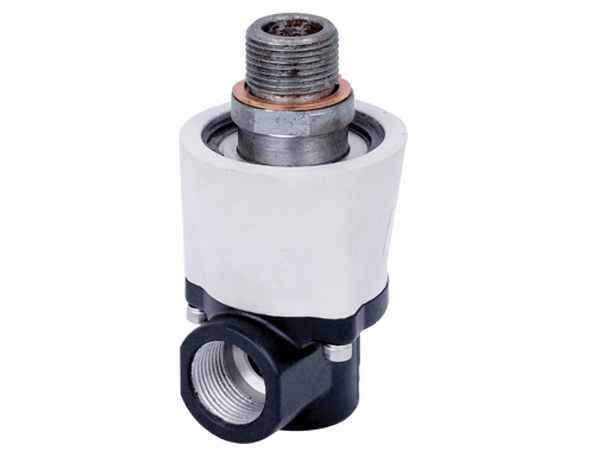
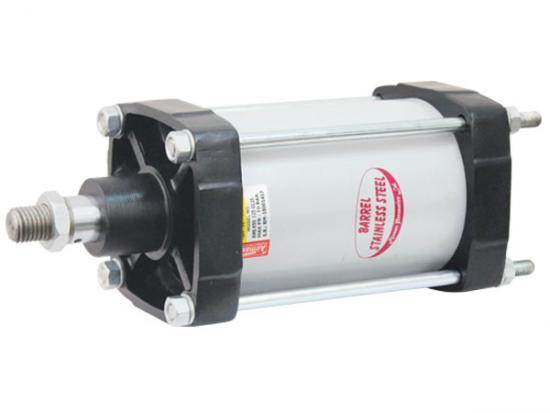
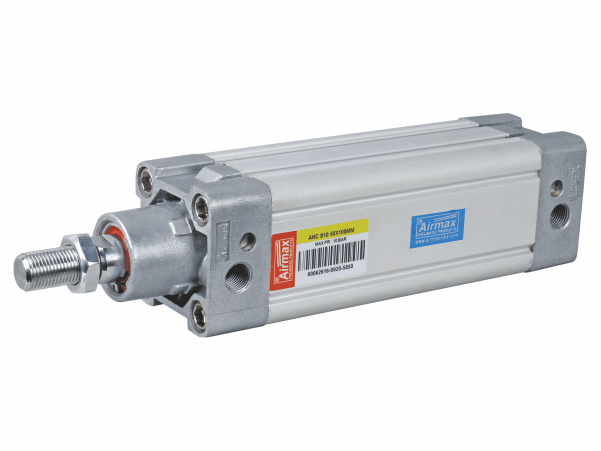
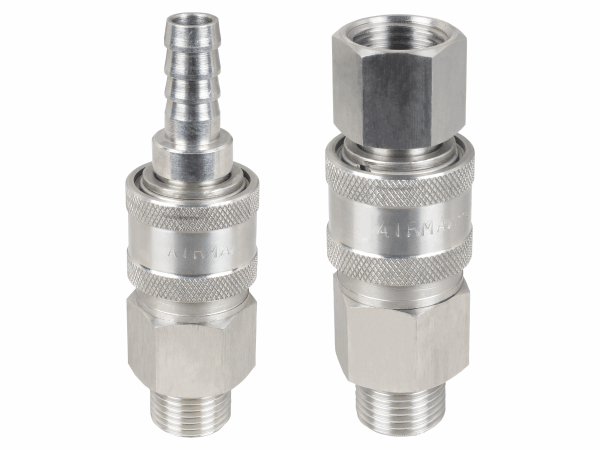
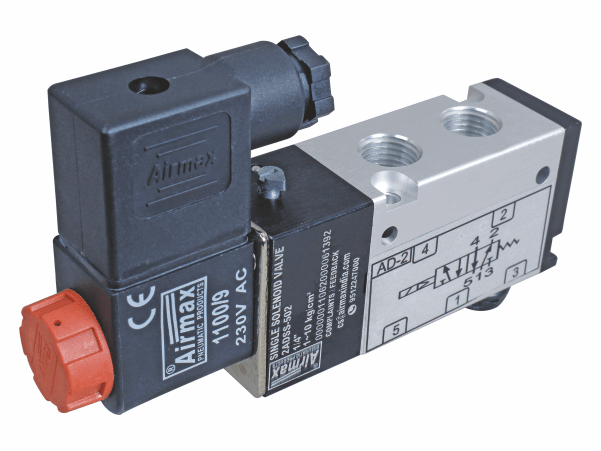
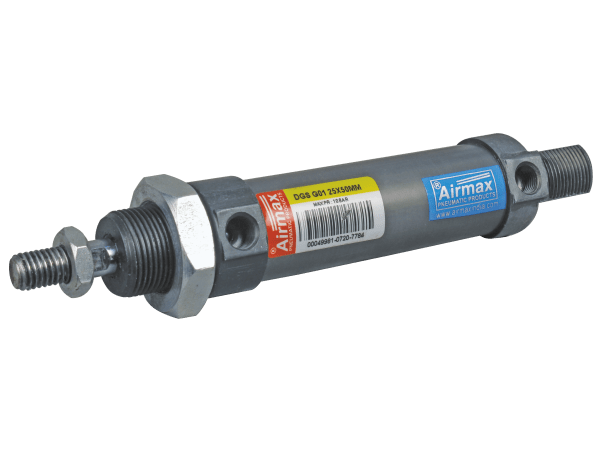
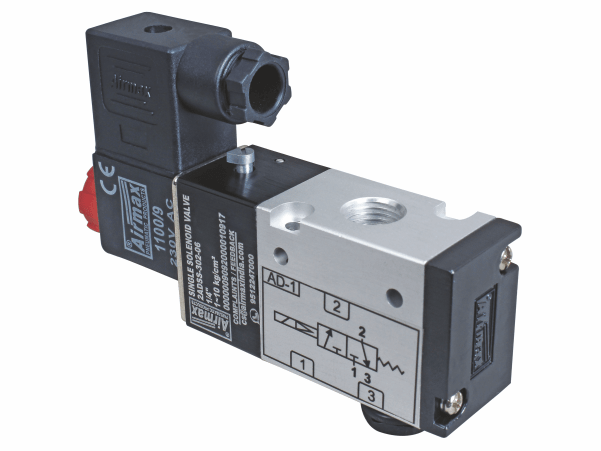
 RSS Feed
RSS Feed
